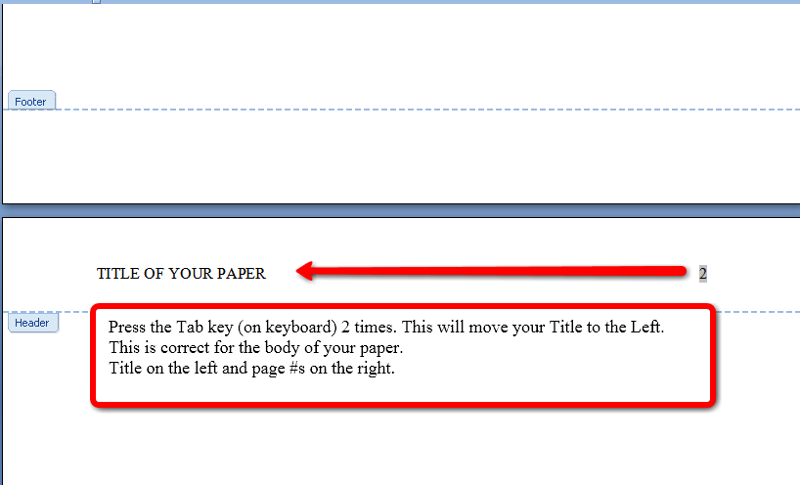

How to do a running head in word 2010 update#
In between the brackets type STYLEREF “Heading 2” (or whichever heading style name you prefer):ġ2) Press F9 to update the second running header:ġ3) IMPORTANT: The next page will display the same Heading 2 style runner because it does not have a Heading 2 style heading:ġ4) The process is exactly the same with the footer. Then insert double curly brackets by pressing Ctrl+F9. Just insert your cursor in the header where you want the second runner to display. Here is running header:ĩ) IMPORTANT: The running header of is the same as since page 3 does NOT have a Heading 1 style heading:ġ0) On, we have a new running header since the page has a new Heading 1 style heading:ġ1) You can of course have more than one running headers or footers. ALL page headers have been updated automatically. Now the page header will display the first Heading 1 style text on the page:ħ) We did all this on the header of actually but it does not matter. The title page running head is not different from the rest of the pages. If a running head is required, type the TITLE OF PAPER in all caps in the header, top left of the page. However, your professor may choose to require one. For example, “ Heading 1“:Ħ) To update the field, press F9. Does APA 7 have a header APA 7 standard for students does not require a running head. Your cursor should be blinking in between these two brackets:Ĥ) Type STYLEREF in between the brackets, followed by double quotation marks ( “”):ĥ) In between the quotation marks, type the NAME of the PARAGRAPH HEADING STYLE that you’d like to appear automatically in every header. That’s where your running header will appear.ģ) Press Ctrl + F9 to insert double curly brackets. Select to insert a BLANK header, for our illustration purposes.Ģ) Place the cursor where you want in the header area. Here is how you can have automatically update running headers and footers:ġ) In your MS Word document, select the Insert tab on the ribbon, and select Header.

Longer the document, the more valuable such “runners” are. It is a very useful contextual document information that helps the reader navigate through the document. Such running headers are useful in identifying the section or chapter that the reader is viewing, regardless of the page number. You can add running headers (also called “running headings”) or running footers to a MS Word technical document so that the text of the selected heading style is automatically printed as a “header” or “footer” either at the top or bottom of every page.


 0 kommentar(er)
0 kommentar(er)
